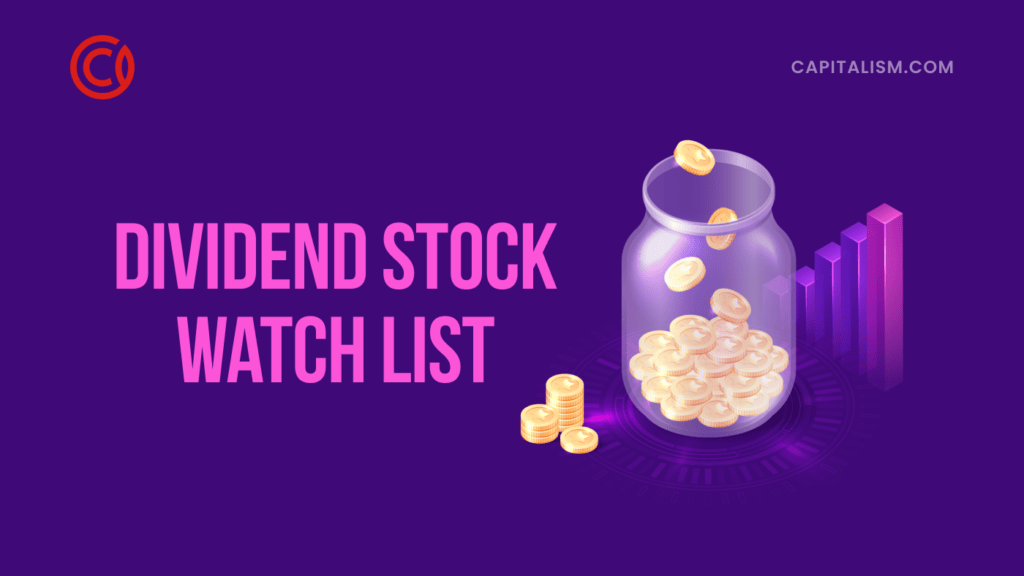At any one time, the average investor only actively invests in 20 to 30 stocks. However, unless you're the most committed buy-and-hold investor, you may rotate into some stocks and out of others over time.
It's why many investors keep one or more watch lists as part of their investing strategy. A watch list is a group of securities, usually stocks, that you "watch" as a potential trade or investment.
But creating a watch list can be easier said than done. That's because there are over 6,000 stocks that a trader or investor can buy or sell daily. That's why you need a strategy for putting together a watch list and what to do with it once you set it up.
How Many Stocks Should Be on Your Watch List?
Unlike the number of stocks you actively trade, the number you include on a watch list is limitless. It's common for investors to have a watch list that includes dozens of individual stocks and ETFs.
The correct answer will depend on you and how much time you can set aside to monitor stocks. Many investors do other things for a living, and monitoring an extensive watch list can be a daunting challenge.
Many brokerages will limit the number of stocks you can have on a single watch list to around 25 stocks. There are some exceptions. MarketBeat.com, for example, allows All-Access subscribers to have an unlimited number of stocks on a watch list and an unlimited number of watch lists.
How Should You Organize Your Watch List?

Just like there is no one-size-fits-all answer to how many stocks should be on your watch list, there's no one-size-fits-all answer to how you should organize your watch list. But there are several strategies that investors can take.
Create a Watch List by Sector
One way to organize a watch list is by sector. The broad stock market is divided into several sectors. Some of the most common are technology (or "tech"), consumer staples, consumer discretionary, healthcare, energy and financials.
Each sector contains many subsectors. Energy, for example, can mean oil and gas stocks and renewable energy stocks. Financial stocks can include banking stocks, insurance companies and even fintech companies.
One of the difficulties of creating a watch list by sector is that some companies may not fit neatly into just one sector. For example, PepsiCo Inc. (NASDAQ: PEP) is frequently considered a consumer discretionary stock but frequently discussed as a consumer staples company.
Create a Watch List by Investing Style
Some investors may create a watch list by investment style. For example, they may have a "growth" list. This list would include stocks they are looking at mostly, if not solely, for stock price appreciation. Most, if not all, of the stocks on this list would not pay a dividend.

They may also keep an "income" or "value" list. The objective is to find stocks that would pay an investor the highest total return with a margin of safety. The list would exclusively include dividend-paying stocks, possibly including Dividend Aristocrats or Dividend Kings that have long track records of increasing their dividends.
You can have several criteria for evaluating whether stocks on this list were a buy. For example, a stock on the value watch list might be undervalued by fundamental measures, whereas a stock on the growth list may only have to reach an attractive price target.
Create a Watch List by Market Capitalization
A diversified portfolio includes large-cap, mid-cap and small-cap stocks. At different times in the market, certain market caps perform better. For example, large-cap stocks tend to be the least volatile in bear markets. However, small- and mid-cap stocks tend to lead the way when the economy emerges from a bear market.
You may want to be exposed to various market capitalizations to take advantage of any market condition. A ready watch list can help you quickly see when it's time to buy or sell.
How to Choose Stocks For Your Watch List
Once you've decided what stocks you're looking at, you will still have some pruning. When deciding which stocks to choose for your watch list, the idiom, "to thine own self be true" comes to mind.
For example, if you're an active trader, you may look for particular technical signals such as stocks trading over a particular volume; stocks breaking out of a 52-week range or moving above one of the standard moving averages. Since you're not looking to hold a stock for the long haul, you want to find signals that give you the best chance for a successful trade.

Value-oriented investors may look for criteria that suggest a stock is undervalued, such as stocks that trade at a low price-to-earnings (P/E) ratio. They will also look for companies that generate strong free cash flow (FCF). For stocks of companies that are not yet profitable, investors may look at the price-to-book (P/B) or price-to-sales (P/S) ratio.
This is where stock screeners are particularly useful. These tools allow investors to filter hundreds or thousands of stocks based on select criteria. For example, you could select stocks in a particular sector, with a specific market cap or that show strong dividend growth.
Some brokerage sites provide screening tools. Others do not. You can also find stock screeners outside of your brokerage account. MarketBeat, for example, provides a variety of stock screeners for All-Access subscribers.
What Are the Most Common Watch List Mistakes to Avoid?
One of the most common mistakes investors make when putting together a list is including too many stocks. Many sites, such as MarketBeat, give investors real-time updates for news affecting the stocks on their watch lists.
But most investors don't have enough time to keep track of multiple stocks, creating "analysis paralysis," in which the volume of news you're receiving causes you to lose focus on the signals you're using to buy a stock.
Another common mistake many investors make is getting too specific when selecting stocks for their watch list(s). It's better to start with a broader search and then refine the search to find stocks you can comfortably follow on at least a weekly basis.

A third common mistake is avoiding specific sectors. It's important to buy stocks that you know. But it may be a mistake to avoid stocks outside your comfort zone. A watch list is an excellent opportunity to learn about a company or sector. And remember, stocks are cyclical, so sectors out of favor today can turn around quickly, and you want to prepare yourself.
The Final Word on Creating and Managing Watch Lists
Like deciding to invest itself, the key to successfully creating and managing watch lists is to get started. It may be too big or small at first. It may lack focus initially.
However, once you select stocks for your list, you'll create a system that works for you, and that's the bottom line. You want a watch list that complements your investing style and investment goals. Because for you to capitalize on opportunities in the market, you have to see the existing opportunities.
As you strive to build a business and grow your investments, this article from the fine folks at MarketBeat has provided valuable insights on creating a stock watch list.
Now, take your financial journey even further with our free course that will help you build a million dollar brand. You'll find out how to get on the fast track for your first $10K month, then scale up to 100 sales per day.
We're on a mission to make one million millionaires, and this program is your gateway to unlocking the path to financial success.
Don't miss this logical and irresistible opportunity to achieve your goals. Request your FREE playbook now and let us guide you toward the road of wealth creation.












